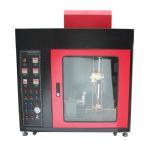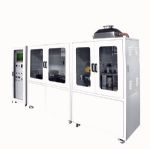- Product Catagory
- Tensile Strength Testing Machine
- Cables Flammability Testing Equipment
- Building Materials Flammability Testing Equipment
- Luggage Test Machine
- Textile Testing Equipment
- Color Fastness Instruments
- Textile Physical Test Instruments
- Lab Dyeing Instruments
- Flammability Test Chamber for Textile
- Consumables for Textile Testing
- Toys Safety Testing Equipment
- Physical & Mechanical Testing
- Flammability Testing
- Clamps for Toy Testing
- EN71-8,ISO8124-4
- Furniture Testing Machine
- Chair Testing Machine
- Mattress Testing Machine
- Furniture Testing Equipment
- Tables Test Machines
- Enviromental Chamber
- Leather and Footwear Testing Instruments
- Mobile Phone Testing Equipment
- Contact us
- Tel:86-769-23830463,86-13751491529
- Fax:86-769-38818154
- Contact:Ivy Xie
 [email protected]
[email protected] - Msn
 [email protected]
[email protected] Whatsapp/Wechat +8613751491529
Whatsapp/Wechat +8613751491529- Skype
 skylineinstruments
skylineinstruments happy_go_lucky4477
happy_go_lucky4477
- Site:Home > Building Materials Flammability Testing Equipment > Building Component Fire Test Vertical Furnace
- Product Images
- detailed description
Durable Flammability Testing Equipment / Building Component Fire Test Vertical Furnace
Application
EN 1363 is mainly aimed at fire resistance requirements of building materials finishing components under high temperature.
Product introduction
The design of the fire test furnace complies with the relevant requirements of EN1363-1, 1363-2 Hydrocarbon Curves and ISO Standards in Fire Performance Tests for Building Material Components and is similar to Sintef (Norway), LGAI (Spain), PSB (Singapore) , OTIS (France), Vetrotech (Switzerland), Chiltern International (UK), AGCFlatglass (Belgium) Bodycote Warrington Fire (UK), Far East Fire Detection Center (China) and Thomas Bell-Wright (Dubai) . The equipment is specially designed and improved over many years to create a reliable and accurate method of testing the various sample configurations and necessary components of the combustion chamber. Various types of restrictive test specimens can be placed on the combustion chamber. frame. The device controls the response of the sample to heating at specified times, temperatures and pressures, with specific performance criteria.
The stove is produced, installed and tested at our factory, and according to your pre-set function, it is disassembled into packages suitable for heavy loading and transported into trailers.
The furnace wall will be sprayed with Hammer blue heat-resistant paint, according to the current regulations configure the piping system.
The furnace tested temperatures up to 1250 °C.
Technical Parameters
Furnace lining
In general, 1400-class insulated bricks are lined with diatomaceous earth insulation and super-insulated, low-temperature materials in certain areas, using 42% as dense as possible in all hazardous areas and areas of the combustor base suitable for cement connection. Alumina brick, the inner lining will provide sufficient insulation during the 6-hour high temperature test.
Replaceable, dense, high-strength, cast material, prefabricated firebricks, will be secured around the steel structure at the front of the combustion chamber. The prefabricated refractories viewing port is constructed by pouring a lightweight refractory material into a steel structural shell that can be removed from the exterior if required for repair. The video camera aperture can be used instead of the refractory material viewing port to suit the customer's requirements.
The cross sections of the three flue drains are circular, each containing an airlock. The three airlocks are circular high-grade stainless steel structures and their shafts are cooled with water. The flue lining here is a biodegradable ceramic fiber material.
Steel frame
The shell is made of structural mild steel and sheet metal and is designed to be a solid, non-deformed structure. Reinforced plates provide holes for burners, sight glass, thermocouples, pressure, and monitoring points. The design of the steel frame is to ensure that its use function has been considered. The durable nature of the device ensures its longevity in the test environment.
The furnace is supplied in three parts that can be assembled on site.
1) Support Steel Work and Cast Iron Work
The vertical surface is bolted to a solid cast iron profile on the combustion chamber structure and is designed to be removable. A recess is formed in the casting for receiving and maintaining the inlaid ceramic fill material used to seal the vertical restrictive frame, which is secured with four wedge/roller bracket assemblies.
2) Motorized Pressure Controlled Dampers
Gas will enter the vertical ducts at the back of the furnace through three openings and then go to a common ground flue. The three airlocks are motor-driven and control the pressure in the combustion chamber. The air lock is water-cooled and requires customers to provide water supply and drainage.
3)Combustion Equipment
Provide combustion equipment as follows:
12 gas burner nozzles For ignition at the sample surface
12 flexible air tubes
12 flexible gas tubes
12 manual air butterfly valves
12 dual-combined 1st order electromagnetic and throttle valves
12 gas plugs
12 load low pressure zero gas governor
3 electric air/gas proportional open main control valves
12 sets of automatic gas burner safety control devices with spark ignition and UV components
12 spark plugs
12 U.V. type flame detectors
1 air pressure difference switch
1 negative pressure switch
1 overpressure switch
2 gas pressure switches
1 air and gas pipeline group to the stove
1 manual gas shutoff main valve
The vertical faces of 6 burners on each side of 6 sides are controlled by 3 zones (4 in each zone)
The layout of the combustion equipment/ignition equipment and piping is laid down by our registered gas engineers according to the gas regulations that comply with European standards. Separate burner flameout system, UV device, spark ignition device, differential pressure switch interlock device, air supply pressure switch/solenoid valve, high and low gas pressure switch, negative pressure switch, furnace over pressure switch, differential pressure air pressure Switch, start light switch, air lock limit switch and purge system
4)Thermocouples, Positions and Design Complying With Latest Regulations
The position of nine thermocouples in the back wall of the furnace will be specified. In the packaging of auxiliary accessories, we will supply suitable nickel-iron alloy pipes to support the thermocouples we provide.
5)Pressure Points, Positions and Design Complying With Latest Regulations
Two nickel-iron alloy tubes are placed on each side of the combustion chamber wall, and the ends of the tubes are in a "T" shape. The pressure points will all be connected to the field wiring inverter.
6)Oxygen Analyser
Specified sampling points include nickel-iron alloy test tubes and accessories.
7)Viewing Ports
The four are located on the back wall of the furnace and consist of heat-resistant glass, air cooling, connection to a supply pipe and stainless steel heat shields. An alternative to this viewport is the camera aperture.
8)Electrical Work
All solenoid valves, safety control boxes, spark plugs, flame detectors, vacuum and overpressure switches, electric valves and safety interlock limit switches will be connected by our installation engineers to the field wiring terminal junction box.
9)Technical Details
For a 3 m x 3 m shaft furnace, the gas demand is about 260 cubic meters of natural gas per hour, liquefied petroleum gas is 130 cubic meters per hour, and the minimum pressure is 21 mbar.
Water requirements, standard 15mm red copper household cold water supply, close to each of these three pressure control valves, the furnace weighs about 12 tons.
Non-loading restrictive frame for vertical test
Internal dimensions 3m X 3m Weight - approx. 5 tons (without sample)
1. Overview
The complete frame is suitable for moving with the bridge crane inside the building. The four roller bars are connected to the wedge brackets on the frame to make them firm and sealed to the combustion chamber.
The outer frame is a strong frame made of flexible steel plate and protected by direct heat with prefabricated high-density refractory and anchoring. They are designed to be detachable, and mechanical damage occurs while testing. Replace it alone. The brick has a properly positioned hole in it to facilitate fixing the specimen. The internal size of the restrictive frame is 3 meters x 3 meters.
The entire device has a support leg so that the frame can be installed anywhere in the laboratory.
Our overview of the furnace control system is applicable to the full-scale fire-rated construction test furnace outlined in this specification, which is an alternative between these two furnaces.
We include automatic control and data logging, full manual control, VDU display, and a capability measurement system that measures all sensor input channels individually and provides terminal test data analysis.
The data recording system has a total of 240 recording channels in 4 recording positions and is capable of measuring from all major types of DC converters to K, N and R type thermocouples, strain gages, pressure sensors, displacement sensors, gas analyzers, Load cell and pressure sensor output. The highest input range accommodates at least 5 VDC and provides protection against ESD and overvoltages. An isolation voltage of 3000 V DC is provided between the measurement input and the control computer. The measurement system can simply expand its functionality.
The output from all measurement channels can be captured in one second.
Real-time data is displayed in the monitoring room, and there may be a second display next to the furnace, but this is not included in this stage.
2. Hardware Description
The heart of the system is a level up to IP65 floor-standing protection. This includes all the relays and logic needed to control the furnace. All external connections are via correspondingly rated cable glands or cable ducts. The internal switches are installed via industry standard DIN rails, with 4 pole relays installed, each with its own indicator and lockout. Microprocessor interface setup is accomplished by using an analog system and switching I/O devices. External communication through the RS485 standard interface. All internal switches and external control lines comply with industry-standard 24V implementations. As long as there is a possibility of melting, it is installed to the system through miniature circuit breakers and leakage protection devices.
3. Computer Control
The conditions required for complete computer automatic control of the furnace temperature and pressure are connected to the control system via RS485.
A control computer will be supplied that can provide a minimum 256 MB graphics system, 2.66 GHz processor, 2 GB of memory, and 300 GB fixed disk. The operating system is Windows XP or Vista unless otherwise specified.
The optically insulated RS485 connection means that there is no practical limit between the computer and the control cabinet. This computer is used to display furnace information including furnace temperature and pressure, burner status and valve position, including sample thermocouples and other sensors such as deflected outputs.
4. Data Logging utilising a dual logging system
The data was recorded on the above computer and during the test it showed real-time analysis data of the performance of the test sample. The device can broadcast its screen display on a standard computer network, and any computer connected to this network can log in to the test information. The facility can be used to provide test data to observers in the laboratory. All recorded information is automatically saved to another computer.
5. Manual Control
The furnace can be operated manually. The complete ignition system is not in any way dependent on the operation of the control computer. Press the clear start button to light the oven. A series of light indicates that the clear sequence progressed correctly. Once all available burners are ignited for a preset time from their individual burner control panel. If the furnace does not ignite within this period, the system will have to be cleared again. The location of the gas air in each zone and the air brake motor can be adjusted individually or via a master control set. During the test, the safety of the furnace is monitored by a chain of interlocking devices, each with its own indicator light. These interlocks are latched, so that the interlock that causes the furnace to close is captured and held until the manual reset firing sequence. At the same time equipped with sound alarm equipment.
6. Measurement Interface
Our recommended data recording and control system consists of a group of 60-channel modules that constitute a total of 240 channels. Each 60-channel module is housed in its own industrially designed enclosure that is easily sized to reach the junction box panel. The device can be mounted to a fixed location or provided as a mobile device with a caster provided by the support frame. The module is simply inserted into the measurement network through a wall-mounted socket so that it fits around the furnace.
This measurement network can be expanded to allow its devices to be used for other experiments in the lab.
The fire-resistant measurement interface is designed to convert the DC output voltage of all types of combustion test sensors, such as thermocouples and pressure sensors, into digital form that can then be passed to computer systems for display and storage. Any sensor that provides a DC output voltage can be connected to any channel.
Current output devices can also be used with an external resistor increase. Cold junction compensation is provided for all thermocouple types including standard and extended temperature ranges.
The design of the AC-DC converters used in these devices is a high-resolution converter, which has many advantages over other designs for low-frequency measurements, particularly the ability to program electrical noise by appropriately selecting the sampling frequency. Each channel can be individually programmed to optimize the conversion characteristics of the connected sensor type.
The channel circuit also includes specially designed input filters for handling the high static electricity generated by certain types of fire resistant test elements. Automatic background calibration runs between measurement scans.
The device is connected to the computer system through an optically isolated RS485 multipoint network, and up to 256 devices can be connected by a single strand of a twisted pair cable over a distance of several kilometers. Other types of modules that can be connected to this measurement network are also available. These devices have other features such as having fewer input channels at each location or interface with relays, switches, and motors.
7. Technical Specification
Channel total 240 , bipolar difference Connector 4 mm round socket (2 per channel). Other types that meet the requirements are available Input range DC voltage, 5 mV, 50 mV, 500 mV, 5000 mV (software programmable) Basic resolution 21 bits Basic accuracy 0.005% FS Measurement speed 1 ms to 3 seconds (software programmable) Cold Junction Compensation Absolute Compensation +0.1°C Computer Interface RS485 Multipoint 75 Ohm Twisted Pair Power Supply 200-240 VAC or 100-130VAC or 24VAC 40 -70Hz Power consumption 7VA 
- Related ProductsMore>>



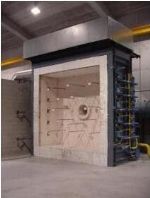
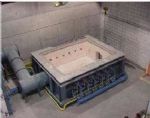


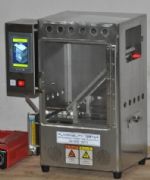
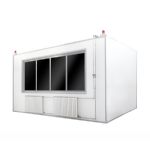
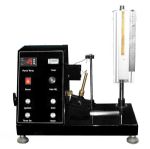
-Test-Device.jpg)
